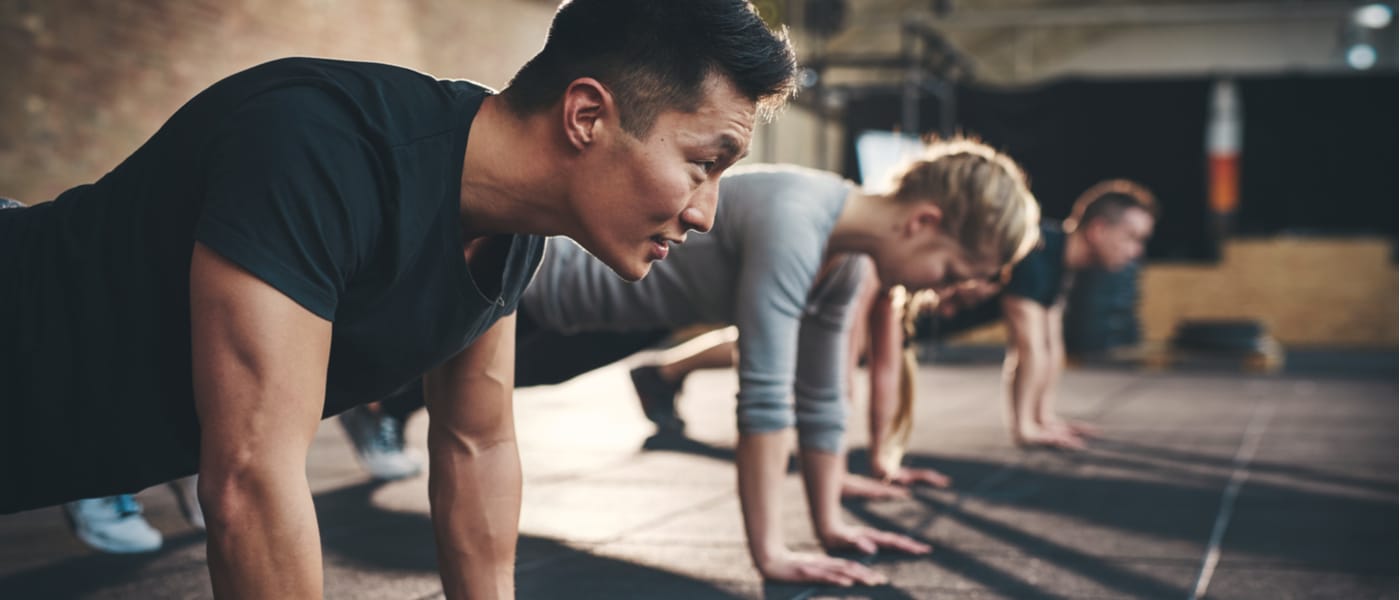5 Health Related Components of Physical Fitness. A well-rounded fitness training program should improve your functional capacity in the five fitness domains: cardiovascular and respiratory endurance, body composition, flexibility, strength, and endurance.
Here’s how it works: Each time you work out, you burn calories. The more intense the workout, the more calories you burn — so when people want to lose weight quickly, they ramp up their exercise intensity.
When burning fat becomes your primary goal — which it is for many people looking to get leaner and lighter — your exercise sessions become all about maxing out your metabolic rate so that you torch as much body fat as possible.
Workouts designed with this goal in mind include three key components: cardiovascular activity paired with resistance training exercises that keep your heart rate elevated throughout the session; a variety of moves that challenge all of your major muscle groups; and enough volume to ensure you’re recruiting and challenging as many muscles cells as possible (a process known as muscle damage). Overall, this may help your fitness, health, and managing pain factors.
1. Cardiovascular Endurance
Cardiovascular endurance is the ability of the heart and lungs to supply oxygen to working muscles. It is a key component of physical fitness. A person with good cardiovascular endurance will be able to perform well in activities that require aerobic activity, such as walking, jogging, and bicycling.
Cardiovascular endurance has four components:
- Maximal oxygen consumption—the body’s ability to consume oxygen during exercise
- Ventilatory threshold—the point at which your breathing rate increases rapidly when you increase intensity or speed during exercise
- Anaerobic threshold—the point at which lactic acid production increases rapidly when you increase intensity or speed during exercise (this happens about 10 seconds before your ventilatory threshold)
- Recovery time between bouts of intense activity
2. Muscular Strength
Muscular strength is another important component of physical fitness; it can help you with various things.
- Strength training helps you to lose weight and decrease your overall body fat percentage, which makes it great for people who are trying to lose weight or maintain a healthy weight.
- Muscle strength also helps improve balance and posture, which can help prevent injuries in the future. If you’re working with someone on their muscular strength (like if they have Parkinson’s disease), building up their muscles can also lead to improved flexibility.
3. Muscular Endurance
- Muscular Endurance
Muscular endurance is performing repeated muscular contractions against a submaximal load. It can be considered a key component of physical fitness because it is important for sports and other physical activities, as well as for overall health and well-being. Muscle endurance can be broken into two components: concentric muscle action and eccentric muscle action. Concentric muscle action occurs when you contract (bend) your muscles, such as when doing biceps curls, shoulder presses, or squats; this type of exercise requires that you lift heavy weights or do repetitions with light weights until fatigue sets in.
Eccentric muscle action occurs when you relax your muscles, such as when lowering yourself down from a pull-up bar after having completed one repetition. This type of exercise does not require additional weight but does require that you maintain control over your movements while resisting gravity’s pull on your body during these exercises.
4. Flexibility
Flexibility is the ability to move your joints through their full range of motion. It can increase or decrease depending on various factors, including age, gender, and the frequency you exercise.
Flexibility is important because it helps prevent injuries by increasing the range of motion in your joints and muscles. Good flexibility also allows for greater efficiency during running or walking. As a result, flexible people tend to be healthier overall than those not flexible enough for these activities.
To improve your flexibility:
- Stretch before and after exercising;
- Don’t hold static stretches for longer than 30 seconds;
- Focus on stretching opposing muscle groups (for example, flexing one arm while stretching another);
5. Body Composition
- Body composition is the ratio of fat and fat-free mass in the body.
- Body fat percentage is the ratio of fat mass to total body mass.
- Percentage of body fat is a useful measure because it indicates if you have too much or too little body fat for your frame, but it does not tell you where that extra weight is coming from (i.e., muscle, bone, or other tissue).
Master the Five health-related components of physical fitness with HiDow
Let’s take a look at five health-related components of physical fitness:
- Cardiovascular endurance
- Muscular strength
- Muscular endurance
- Flexibility
- Body composition.
The Five Components of Physical Fitness are important for everyone, whether you’re an athlete or not. It’s good to know what the components of physical fitness are so that you can work on them in your way and have fun improving on each one. You never know. You may even beat the world record in one of these categories someday!

Related Stories
How to Cope with a Sports Injury
Staying active helps your body stay strong. But sometimes, activity leads to pain, strain, or...
Jul
Red, White, and Soothe: How HiDow Helps You Recover in the Heat
Recovery that works in winter doesn’t always hold up in the heat. The body reacts...
Jul
Massage Gun Showdown: How the Power Duo Compares to Traditional Methods
Have you ever considered that a handheld device could revolutionize your muscle recovery? With the...
Jun
Fatherly Fitness Tips For Men’s Health Month
Men’s Health Month is more than a date on the calendar—it’s a call to action....
Jun
Built to Move: The Everyday Recovery Edit
Movement is what keeps us going—literally. Whether it’s recovering after a run, loosening up after...
Jun
Unlocking The Secret To Tissue Injury Recovery With TENS/EMS Devices
Have you ever wondered why some injuries take longer to heal than others? Tissue injuries...
May